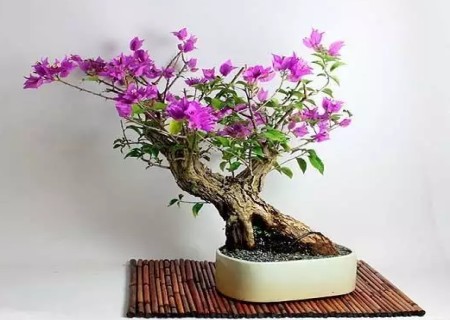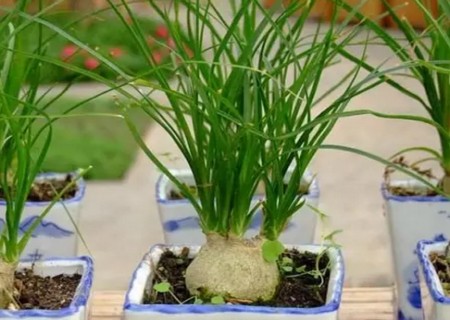Culture methods and matters needing attention of potted Cymbidium
The orchid is tall and straight in shape, bright and green in color, graceful, elegant and graceful; at the same time, it is strong, adaptable and extremely shady, so it is an excellent shade-loving foliage plant for indoor greening and decoration. It is suitable for home and office layout. Can be watched alone; can also be arranged with other flowering plants to set off the freshness and beauty of other flowers. In addition, it is also an excellent leaf material for modern flower arrangement.
The leaves of the orchid are evergreen all the year round, tall and straight, graceful, elegant and elegant! More importantly, the orchid is strong, adaptable and extremely shade-tolerant, so it is very suitable for breeding in the family. The following is to introduce the breeding methods and matters needing attention of one-leaf orchid.
1. Soil
Magnolia lanceolata is not strict with the soil, and it is more resistant to barren, but it is better to choose loose and fertile slightly acidic soil. When potted at home, you can choose rotten leaf soil, peat soil, garden soil mixed use.
2. Lighting
One-leaf orchid is a shade-loving plant, it can grow well without light, and it can be maintained in a bright room. If the light is too strong, you can use a shade net to shade it, but do not let the sun shine directly. A short period of exposure will burn the leaves, slowing down its growth rate and reducing its ornamental value.
3. Temperature
A leaf orchid likes to be warm and avoid severe cold. The ambient temperature should be kept between 15 and 25 ℃, and the overwintering temperature should not be lower than 5 ℃.
4. Fertilization
Before planting, rotten leaves can be used as base fertilizer, the dosage is 2 kg per square meter, and the base fertilizer should be turned evenly into the soil. In the vigorous growth stage of spring, summer and autumn, the plant should be topdressing with thin fertilizer and water once a week, and fertilizer should be stopped in winter.
5. Watering
Magnolia lanceolata has low requirements for soil, but higher requirements for water. Need to keep the basin soil moist, and often spray water to the leaves to moisturize to promote the germination of new leaves. However, after the beginning of autumn, properly reduce watering and keep the basin soil dry in winter.
6. Pruning
The one-leaf orchid planted in the pot for 3-4 years at home usually has dense branches and leaves. The one-leaf orchid pot should be thinned every spring, and the old leaves and yellow leaves should be removed in time to promote the germination of new leaves, but attention should be paid to cutting only the old leaves and keeping the new leaves.
7. Change the basin
The one-leaf orchid has strong adaptability and fast growth. The basin should be changed every 1-2 years, and the culture soil mixed with loam, rotten leaf soil and river sand should be used. When changing the basin, apply a small amount of broken bone slices or cake fertilizer as base fertilizer, pour through water and culture in a cool place after planting.
Note:
1. Prevent soil waterlogging, otherwise the rhizome of one-leaf orchid is easy to rot.
2. Avoid direct sunlight, otherwise unfading yellow patches will appear on the leaves.
3. For the orchid cultivated indoors, the indoor temperature should be raised appropriately, especially at night. Open windows in time for ventilation during the day to reduce indoor humidity so that the environment is too wet and infected with diseases and insect pests.
4. liquid fertilizer is applied 1-2 times a month during the peak growth period in spring and summer to ensure that the leaves are beautiful and bright.
5, the environment is too dark but not conducive to the germination of new leaves, it is best to move it to a place with bright light every once in a while, which is conducive to growth and beauty.
6. once a leaf orchid is found to be sick, cut off the diseased leaves in time and clean them up so as to reduce the source of infection.
Time: 2019-05-31 Click:
- Prev

Maintenance methods of potted triangular plum
In early summer, ordinary and simple triangular plum can be seen everywhere in many cities. it has a spiritual symbol of enthusiasm, tenacity and tenacity. With the passage of time, this kind of triangular plum, which originated from South America with high ornamental value, has been gradually introduced and cultivated by people all over the country, and has become one of the widely used ornamental flowers and trees.
- Next

Cultivation method of potted bottle orchid
As a flower for viewing stems and leaves, the bottle orchid can be used to decorate living rooms, bookrooms, hotels and meeting places, giving people a novel and unique feeling. It can be planted in various specifications as indoor decoration: small plants planted in exquisite pots, placed on desks and countertops, looking elegant and delicate; medium and large potted plants
Related
- Fuxing push coffee new agricultural production and marketing class: lack of small-scale processing plants
- Jujube rice field leisure farm deep ploughing Yilan for five years to create a space for organic food and play
- Nongyu Farm-A trial of organic papaya for brave women with advanced technology
- Four points for attention in the prevention and control of diseases and insect pests of edible fungi
- How to add nutrient solution to Edible Fungi
- Is there any good way to control edible fungus mites?
- Open Inoculation Technology of Edible Fungi
- Is there any clever way to use fertilizer for edible fungus in winter?
- What agents are used to kill the pathogens of edible fungi in the mushroom shed?
- Rapid drying of Edible Fungi

